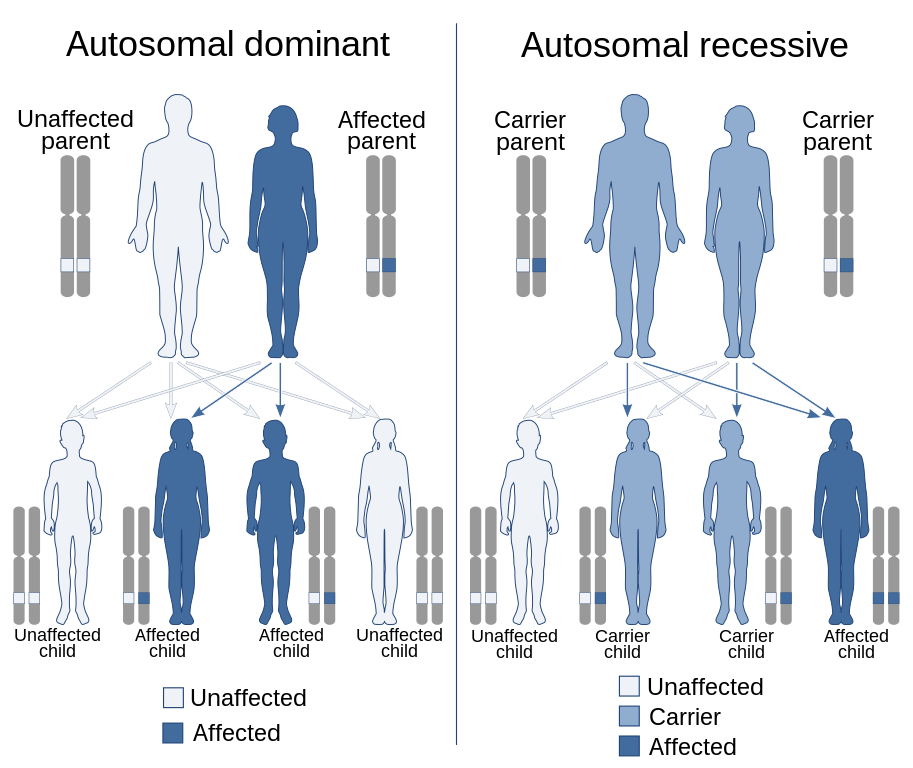Chapter Five: Prenatal Development and Birth
The Role of Genetics
 Jim Springer and Jim Lewis were identical twins separated at 4 weeks of age.
Jim Springer and Jim Lewis were identical twins separated at 4 weeks of age.
CBS NEWS: Twin brothers separated at birth reveal striking genetic similarities
When they were reunited at the age of 39, they discovered that they possessed striking similarities. Both worked as deputy sheriffs, suffered from tension headaches, vacationed in Florida, were prone to nail biting, smoked Salem cigarettes, drove Chevrolets, had dogs named Toy and married and divorced women named Betty. One twin named his son James Allan, and the other named his son James Alan. Both preferred math over spelling and enjoyed carpentry and mechanical drawing. The study of the “Jim twins” brings up the debate of nature vs. nurture and which has a greater impact on a child’s Image: Ripley’s Believe It or Not! development-their environment or their genetics.
Jim Springer and Jim Lewis were part of a landmark study, The Minnesota Twin Family Study, conducted from 1979 to 1999, which followed identical and fraternal twins who were separated at an early age. Researchers at the University of Minnesota, led by Thomas Bouchard, launched the landmark study. Over the course of 20 years, they studied 137 pairs of twins: 81 pairs of identical twins (twins who developed from one egg that split in two), and 56 pairs of fraternal twins (twins who developed from two eggs fertilized by two different sperm). The study set out to determine the impact of nature (genes) vs. nurture (environment) on a child’s development.
This topic has also come up in a 2018 film entitled “Three Identical Strangers.” The film follows triplets separated at birth and grapples with the question of whether nature or nurture had a greater impact on their long-term development. In this case, the triplets born in 1961 were studied extensively, not knowing that they had each other until adulthood. The case is tragic in many ways. Many siblings separated by the Louise Wise Adoption Services have since found each other. The intricacies of the research that was done remains in closed files (Wardle et al; 2018).
When genetically identical twins separated as infants show such striking similarities, can we conclude that their genes caused these similarities? The Minnesota study of identical twins points to both the importance of the genetic basis of human development and the need for further research on genetic and environmental factors (Bouchard, Lykken et. al. 1990). Certainly, genes play a crucial role in the way a child develops. In this chapter, we will discuss the impact genes have on a child’s development.
Natural selection is the evolutionary process that favors individuals best adapted to survive and reproduce. Evolutionary psychology emphasizes adaptation, reproduction, and “survival of the fittest” in shaping behavior. Just as evolution shapes our physical features, it also influences how we make decisions, how aggressive we are, and our mating patterns. For example, if our ancestors were hunters and gatherers and the men did most of the hunting and the women gathered seeds and plants for food, the men would have to possess certain physical traits to travel long distances and hunt and kill animals. Those born with these traits would be more likely to gather more food, attract stronger mates and reproduce. Evolutionary developmental psychologists believe in the importance of childhood. They believe that an extended “juvenile” period for learning information is crucial. What is learned in childhood prepares children for adulthood.
It is important to understand how conception takes place to better understand genetic and chromosomal abnormalities that might impact a child’s development. Reproduction occurs when the female gamete (ovum) is fertilized by the male gamete (sperm). They join to form the first cell of life (the zygote). This cell contains 23 pairs of chromosomes.
The zygote is the first cell of human life. Life begins as a single cell with a nucleus. Each nucleus has 23 pairs of chromosomes, one member of each pair coming from each parent.
DNA is a complex molecule that contains genetic information. Genes are the units of hereditary information composed of DNA.
Cells divide in two different ways. Mitosis is cellular reproduction in which the cell’s nucleus duplicates itself with two new cells being formed. Each new cell contains the same DNA as the parent cell, with the same 23 pairs of chromosomes. Meiosis is a specialized form of cell division that occurs to form eggs and sperm (or gametes) (Santrock, 2013),
Genotype is the actual genetic material. Phenotype is the way an individual’s genotype is expressed in measurable or observable characteristics (Berk, 2017).
Males have X and Y chromosomes. Females have two X chromosomes. In some cases, one gene of a pair always exerts its effects; it is dominant, overriding the potential influence of the other gene, called the recessive gene. A recessive gene exerts its influence only if the two genes of a pair are both recessive. If you inherit a recessive gene from both of your parents, you will inherit that recessive gene. If you inherit a recessive gene from just one of your parents, you may never know you carry the gene. Brown hair, farsightedness, and dimples rule over blond hair, nearsightedness, and freckles in the world of dominant-recessive genes. However, most characteristics are not caused by only one gene. Most are determined by the interaction of several genes. This is called polygenic inheritance. This is a picture of the dominant-recessive genes principle.

If a parent passes along a dominant gene for brown hair, their child will be born with brown hair. The only way they will have a blond-haired child is if both parents pass on a recessive gene for blond hair. Page URLs:
- https://www.cbsnews.com/news/twin-brothers-separated-at-birth-reveal-striking-genetic-similarities/
- https://www.businessinsider.com/three-identical-strangers-twin-studies-nature-vs-nurture-2018-7
Media Attributions
- Jim and Jim twins © Ripley's Believe It or Not! is licensed under a All Rights Reserved license
- Autosomal Dominant and Recessive © Wikimedia is licensed under a CC BY-SA (Attribution ShareAlike) license

